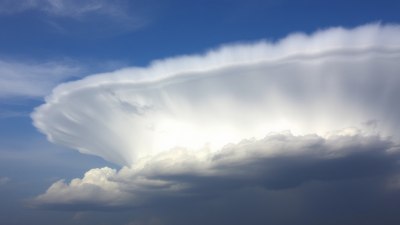What Is Heat Lightning and Why It Flashes Without Sound
Explore the phenomenon of heat lightning, its characteristics, and reasons for its silent flashes.

Heat lightning is a term used to describe a weather phenomenon that occurs during warm summer evenings. It is often perceived as lightning that flashes across the sky without any accompanying thunder. Many people are curious about this intriguing display of light, especially since it seems to appear out of nowhere. What exactly is heat lightning, and why does it flash without the usual sound associated with thunderstorms?
First, let's clarify what heat lightning actually is. Scientifically, the term “heat lightning” is a misnomer. What people commonly refer to as heat lightning is simply distant lightning from a thunderstorm that is too far away for the thunder to be heard. This phenomenon is most frequently observed during hot, humid summer nights when conditions are perfect for thunderstorms, but the storms themselves are miles away.
The Science Behind Heat Lightning
Lightning is created by the discharge of electricity within the atmosphere, usually as a result of thunderstorms. When a storm develops, it generates a charge separation that creates a powerful electrical field. This electrical energy can build up until it overcomes the resistance of the air, resulting in a lightning bolt. Thunder is the sound generated by the rapid expansion of heated air around the lightning bolt. If you see lightning flash but do not hear thunder, it typically means the storm is located at least 10 to 15 miles away. At that distance, the sound disperses before it reaches your ears, leading to the visual spectacle devoid of audible noise.
Conditions Favoring Heat Lightning
Heat lightning is most commonly seen during the summer months in regions where warm, humid air masses dominate the atmosphere. These conditions are conducive to thunderstorm development, even if the storms are situated far from where the lightning is observed. The key to spotting heat lightning lies in the position of the observer relative to the storm cells. The flat terrain in many regions also aids in our ability to see distant flashes of lightning against the night sky.
Why the Name 'Heat Lightning'?
The term 'heat lightning' likely originated because these flashes frequently occur on hot nights and coincided with high humidity—conditions that also correlate with the summer thunderstorms responsible for the distant lightning. Early observations linked these bright flashes with the prevailing warm weather, leading to the misleading association. While heat may contribute to an increase in thunderstorms during summer, it is not a causal factor for the lightning itself.
Misconceptions About Heat Lightning
Many individuals harbor misconceptions about heat lightning. One such misconception is that it is a unique type of lightning or that it poses no threat. In reality, heat lightning and regular lightning are fundamentally the same; they are both caused by the same electrical processes in storm systems. The difference is merely a matter of distance and auditory perception. Moreover, just because one cannot hear thunder doesn't mean one is completely safe from lightning. If a storm is nearby, lightning can strike far from the main storm cell, posing a risk even without audible thunder.
Observing Heat Lightning
People who enjoy stargazing or sitting outside during warm summer evenings might find themselves witnessing heat lightning. It can be a mesmerizing sight as streaks of light illuminate the evening sky, often appearing white, blue, or even purple. Observing heat lightning can also serve as a reminder of the dynamic weather patterns present in our atmosphere. To increase the chances of seeing distance lightning, find an open area away from bright city lights, which can obscure the view of the night sky.
Phenomena Related to Heat Lightning
Heat lightning is not isolated; it often surfaces alongside other meteorological phenomena. For instance, the appearance of distant flashes may coincide with warm, moist air leading to increased humidity. This humidity itself can create a hazy effect, potentially enhancing the visibility of the lightning. Moreover, other atmospheric conditions like stratocumulus clouds can obscure the storm, intensifying the mystery behind the distant flashes as they light up the sky.
Safety Considerations
Understanding heat lightning can assist in reinforcing safe practices during thunderstorms. It’s crucial not to dismiss the potential dangers associated with lightning simply because it's perceived as 'heat lightning.' Lightning can travel several miles from its originating storm, which means any visible flash warrants caution. Outdoor activities should always be postponed if thunderstorms are in the area, even if heat lightning is the only indicator of storm activity. Staying indoors and avoiding open fields or tall structures during electrical storms remains a fundamental safety measure.
In summary, heat lightning is a display of distant lightning from thunderstorms that occurs without accompanying thunder due to the distance of the storm. It is often seen on warm summer nights and is shaped by atmospheric conditions prevalent during the season. While it might seem benign due to the absence of sound, it is vital to approach such lightning occurrences with knowledge and caution. By understanding heat lightning, we can appreciate the complexity of weather patterns while remaining safe during stormy conditions.











